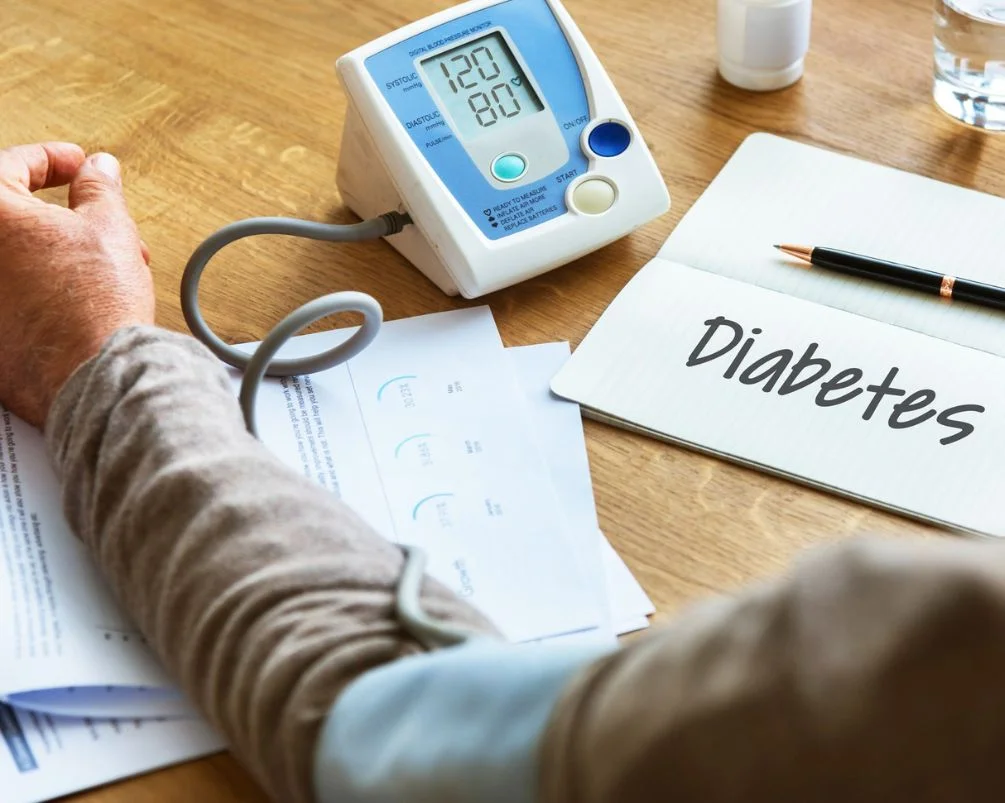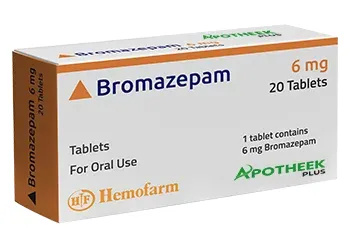What are you looking for?
Search
Welcome to Apotheek Plus France!

Type 2 Diabetes

Overview
Type 2 diabetes is a long-term metabolic disease that must be diagnosed and treated in time. Type 2 diabetes occurs when the body is unable to use insulin properly and sugars build up in the blood. It used to be known as adult-onset diabetes. Type 1 and type 2 diabetes are common in childhood and adulthood. Type 2 is more commonly diagnosed in middle-aged and older adults. But it seems that the incidence of type 2 diabetes in children with obesity has risen; more young people also have type 2 diabetes.
Type 2 diabetes has no cure. Losing weight, eating well and exercising can help control the condition. If diet and exercise don’t help keep your blood sugar under control, you may need diabetes medicines, perhaps even insulin.
In this article, you gain awareness of its causes, symptoms, and treatments is vital for patients, caregivers, and healthcare professionals. What is a framework drug, the role of anti-diabetes medication, and the clinical use of Ozempic 1mg Injection Pen is.
What Is Type 2 Diabetes?
Type 2 diabetes occurs when the body becomes resistant to insulin or produces insufficient amounts to maintain normal blood glucose levels. Without proper management, it may lead to cardiovascular disease, kidney damage, neuropathy, and vision problems.
Causes of Type 2 Diabetes
Type 2 diabetes arises from a combination of genetic and lifestyle influences:
-
Genetic factors: A family history of type 2 diabetes mellitus (T2DM) significantly increases an individual's risk.
-
Lifestyle contributors: Obesity (particularly central adiposity), physical inactivity, poor dietary choices, urbanization, stress, and lack of sleep substantially elevate risk. Obesity alone accounts for over half of cases in many populations.
-
Underlying syndromes: Insulin resistance, often a precursor to type 2 diabetes, stems from impaired cellular glucose uptake, overproduction of insulin by the pancreas, and systemic metabolic imbalance.
Common Symptoms
-
Excessive thirst and frequent urination
-
Unexplained weight loss
-
Fatigue and low energy
-
Blurred vision
-
Slow healing of wounds
-
Areas of darkened skin, most often in the armpits and neck.
Diagnosis & Monitoring
Diagnosis relies on blood tests such as:
-
Fasting blood sugar: Normal is < 100 mg/dL; prediabetes is 100–125 mg/dL; diabetes is ≥ 126 mg/dL on two occasions
-
Random blood sugar: ≥ 200 mg/dL in the presence of symptoms suggests diabetes
-
Oral glucose tolerance test (OGTT): ≥ 200 mg/dL at two hours post-load indicates diabetes
A1C test: ≥ 6.5% confirms diabetes; 5.7–6.4% indicates prediabetes
Mechanism Behind Type 2 Diabetes (How It Develops)
Type 2 diabetes develops gradually as the body’s cells become resistant to insulin — the hormone responsible for allowing glucose to enter cells for energy. In response, the pancreas tries to produce more insulin, but over time it becomes unable to meet the body’s demand.
This leads to chronically high blood glucose levels (hyperglycemia), which can damage blood vessels and organs over time.
Key underlying mechanisms include:
-
Insulin resistance: Cells in muscle, fat, and liver become less responsive to insulin.
-
Beta-cell dysfunction: The pancreas cannot secrete enough insulin to overcome resistance.
-
Increased hepatic glucose output: The liver releases excess glucose even when blood sugar is high.
-
Low-grade inflammation and oxidative stress: These contribute to metabolic imbalance and cardiovascular risk.
Type 2 Diabetes in France & Europe
Type 2 diabetes is a growing public health challenge in France and across Europe.
-
Approximately 4–6 % of French adults live with Type 2 diabetes.
-
In people aged over 70, the rate rises to nearly 20 % of men and 15 % of women.
-
The incidence has stabilized in recent years, but prevalence continues to increase due to an aging population and longer survival.
-
The average annual cost of managing Type 2 diabetes in France is estimated at €4,800 per patient, including complications.
-
The French health system (Assurance Maladie) provides full coverage for chronic disease care, including Therapeutic Patient Education (TPE) programs that teach patients self-management skills.
Adding this localized data helps readers in France relate to the topic and supports SEO targeting (“diabète de type 2 en France”).
Complications of Type 2 Diabete
Without effective control, high blood sugar damages blood vessels and nerves, leading to severe long-term complications such as:
Microvascular Complications:
-
Retinopathy: Damage to small blood vessels in the eyes, risking vision loss.
-
Nephropathy: Kidney damage leading to chronic kidney disease or failure.
-
Neuropathy: Nerve damage causing numbness, pain, or tingling in the limbs.
Macrovascular Complications:
-
Cardiovascular disease: Heart attack, stroke, or peripheral arterial disease.
-
Foot ulcers & amputations: Due to poor circulation and nerve loss.
Early diagnosis, strict glucose control, and regular medical check-ups can prevent or delay these outcomes.
Prevention & Lifestyle Management
Although genetics play a role, lifestyle factors are critical in preventing or delaying Type 2 diabetes.
1. Diet:
-
Prioritize whole grains, fruits, vegetables, and lean proteins.
-
Limit sugary foods and beverages.
-
Reduce saturated and trans fats.
2. Exercise:
-
Engage in at least 150 minutes of moderate activity per week (e.g., brisk walking, cycling).
-
Add resistance training 2–3 times weekly to improve insulin sensitivity.
3. Weight Management:
-
Losing 5–10 % of body weight can significantly lower diabetes risk and improve blood glucose control.
4. Avoid Smoking & Alcohol Excess:
-
Both worsen insulin resistance and cardiovascular risks.
5. Regular Screening:
-
Early detection of prediabetes allows lifestyle interventions that may reverse or delay diabetes onset.
Treatment Options for Type 2 Diabetes
Lifestyle Changes
Adopting a balanced diet, regular physical exercise, and weight management is the foundation of treatment.
Antidiabetic Medications
When lifestyle interventions are insufficient, antidiabetic medications such as metformin, SGLT-2 inhibitors, DPP-4 inhibitors, and GLP-1 receptor agonists are prescribed.
Role of the Ozempic 1mg Injection Pen
The Ozempic 1mg Injection Pen (semaglutide) is a GLP-1 receptor agonist prescribed in France for patients with type 2 diabetes when other therapies fail to achieve optimal glucose control. It:
-
Enhances insulin secretion in response to meals
-
Reduces excess glucagon release
-
Slows gastric emptying, improving satiety
-
Lowers HbA1c and supports weight reduction
Ozempic is administered once weekly via a subcutaneous injection and requires strict medical supervision.
FAQs – Type 2 Diabetes & Antidiabetic Medicines
1. Can I buy the Ozempic 1mg Injection Pen online?
No. It is prescription-only and must be dispensed by an authorized French pharmacy.
2. What are antidiabetic medicines besides Ozempic?
Options include metformin, SGLT-2 inhibitors, DPP-4 inhibitors, insulin, and other GLP-1 analogues.
3. Why do some people misuse Ozempic for weight loss?
It suppresses appetite, but it is only approved as an antidiabetic treatment for type 2 diabetes, not for cosmetic weight loss.
4. Is it safe to buy medicines online?
Yes, but only through licensed, verified pharmacies. Unofficial online sellers often provide counterfeit or dangerous products.
5. How effective is the Ozempic 1mg Injection Pen?
Clinical studies show it reduces HbA1c significantly, promotes weight loss, and lowers cardiovascular risks.
6. What are the complications if Type 2 diabetes is not treated?
Untreated diabetes can lead to heart disease, kidney failure, blindness, nerve damage, and poor wound healing. Managing glucose, blood pressure, and cholesterol helps prevent these issues.
7. Can Type 2 diabetes be reversed?
While there’s no permanent cure, achieving remission through weight loss, diet changes, and exercise can normalize blood glucose levels for some patients.
8. How often should I monitor my blood sugar?
It depends on your treatment plan. Patients using insulin may need to check daily, while others can rely on periodic HbA1c tests every 3–6 months.
9. Can children develop Type 2 diabetes?
Yes. Due to rising childhood obesity, Type 2 diabetes is now seen in adolescents, though it remains more common in adults.
10. What are the current guidelines for treating Type 2 diabetes in France?
French and European guidelines recommend metformin as first-line therapy, followed by GLP-1 receptor agonists or SGLT2 inhibitors for patients with cardiovascular or kidney disease risks.
Monitoring & Follow-Up Care
Effective diabetes care is an ongoing process that involves continuous monitoring and medical follow-up.
-
HbA1c: Test every 3–6 months to assess long-term glucose control.
-
Eye exams: Yearly, to detect early retinopathy.
-
Kidney function tests: Annually (urine microalbumin and eGFR).
-
Foot exams: At least once a year.
-
Blood pressure & cholesterol checks: At every medical visit.
These measures ensure complications are detected early and treatment remains effective.
Conclusion
Type 2 diabetes requires a structured treatment plan involving lifestyle modification and evidence-based pharmacotherapy. The Ozempic 1mg Injection Pen represents an important option among modern antidiabetic therapies. However, patients must avoid unsafe practices when attempting to buy medicines online and rely only on regulated French and EU pharmacy channels. Consulting a healthcare professional remains the safest way to ensure proper diabetes management.








